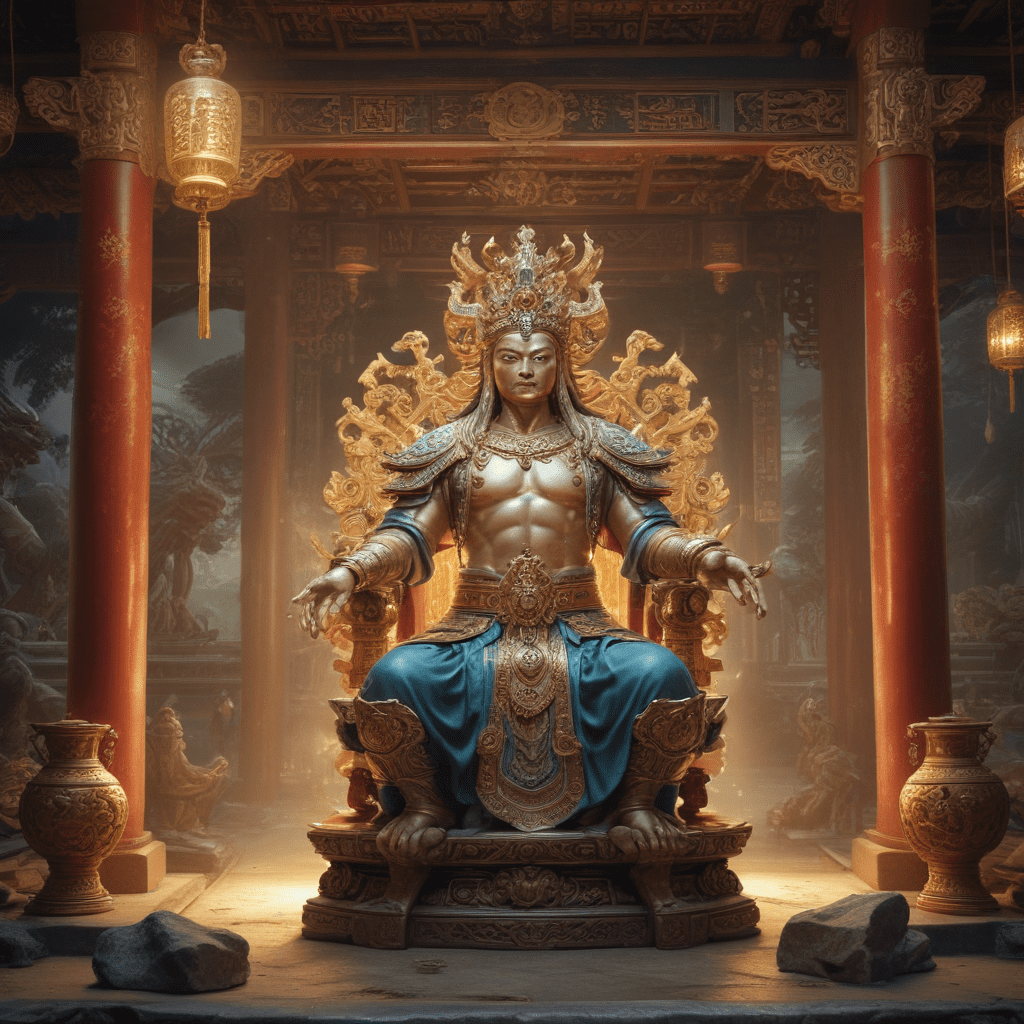Jörmungandr in Popular Culture: The Serpent’s Impact on Modern Entertainment
I. Introduction
Jörmungandr, often referred to as the Midgard Serpent, is a significant figure in Norse mythology, known for its colossal size and role in the myth of Ragnarök. The serpent, born of Loki and the giantess Angerboda, encircles the Earth, symbolizing the cyclical nature of existence and the delicate balance of life. This article aims to explore Jörmungandr’s influence on modern entertainment, examining its portrayal across various mediums and its symbolic significance in contemporary culture.
II. Jörmungandr in Norse Mythology
In Norse mythology, Jörmungandr plays a pivotal role in the apocalyptic events of Ragnarök, the end of the world as foretold in the ancient texts. According to legend, Jörmungandr is destined to battle Thor, the god of thunder. This epic confrontation is a central theme of the myth, representing the ultimate clash between order and chaos.
Jörmungandr’s relationships with other mythological figures are equally intriguing. As Loki’s offspring, the serpent is intertwined with the fates of gods and giants alike. Its siblings include Fenrir, the monstrous wolf, and Hel, the goddess of the underworld, which emphasizes the chaotic lineage from which it originates. The significance of Jörmungandr in ancient Scandinavian culture reflects deep-rooted beliefs in fate, nature, and the inevitable cycle of destruction and rebirth.
III. Jörmungandr in Literature
Modern literature has seen a resurgence of interest in Jörmungandr, with many fantasy novels drawing inspiration from its mythological roots. Authors like Neil Gaiman and Rick Riordan have incorporated the serpent into their narratives, blending ancient lore with contemporary storytelling.
- Neil Gaiman’s “Norse Mythology”: This collection retells the myths, including Jörmungandr’s role in the stories of Thor and Loki, making the ancient tales accessible to a modern audience.
- Rick Riordan’s “Magnus Chase” series: Jörmungandr appears as a formidable creature in the adventures of Magnus, further popularizing its legend among younger readers.
In graphic novels and comics, Jörmungandr’s representation often leans towards the visually striking, with artists depicting the serpent in various artistic styles. The serpent’s immense size and ominous presence serve as powerful symbols of the chaos and unpredictability of nature. This portrayal influences literary archetypes and themes, often embodying the struggle between humanity and the forces beyond their control.
IV. Jörmungandr in Film and Television
Jörmungandr’s influence extends into the realm of film and television, where serpent-like characters often draw inspiration from its mythological origins. Notable films featuring such themes include:
- “Thor” (2011): While Jörmungandr does not appear directly, the film incorporates elements of Norse mythology, influencing the depiction of serpent-like beings.
- “Pacific Rim” (2013): The Kaiju creatures echo Jörmungandr’s colossal nature, representing the monstrous forces that humanity must face.
In television, series like “Vikings” and “Game of Thrones” explore similar themes of chaos and power, often paralleling the narrative arcs found in the Jörmungandr myth. These portrayals shape audience perceptions of Norse mythology, making it resonate with contemporary issues of conflict, survival, and destiny.
V. Jörmungandr in Video Games
Video games have increasingly incorporated Jörmungandr or similar serpentine figures, allowing players to engage with the myth in interactive ways. Popular titles include:
- “God of War” (2018): Jörmungandr plays a crucial role in the narrative, where players explore the depths of Norse mythology, encountering the serpent as both an ally and an adversary.
- “Smite”: This multiplayer online battle arena game features Jörmungandr as a playable character, allowing players to embody the serpent in competitive gameplay.
Gameplay mechanics inspired by the myth often include themes of balance and chaos, reflecting Jörmungandr’s dual nature. The role of Jörmungandr in these narratives enhances players’ understanding of Norse mythology, enriching the gaming experience with cultural significance.
VI. Jörmungandr in Music and Art
Jörmungandr’s impact on culture extends to music and art, where the serpent has inspired various creators. Musical works that draw upon its mythology often explore themes of chaos, power, and nature. Artists like Wardruna have incorporated Jörmungandr into their compositions, blending traditional Norse instruments with contemporary sounds to evoke the spirit of the myths.
In contemporary art, Jörmungandr is frequently represented in various forms, from paintings to sculptures. Artists interpret the serpent through different lenses, often highlighting its symbolic significance in the modern world. These artistic representations contribute to the aesthetics of modern culture, merging ancient mythology with contemporary themes.
VII. The Symbolism of Jörmungandr Today
Today, Jörmungandr is analyzed as a symbol of chaos and balance, embodying the duality of existence. The serpent represents both danger and protection, reflecting the complexities of nature and human experience. In modern societal contexts, Jörmungandr serves as a metaphor for:
- Environmental Issues: The serpent’s encircling of the Earth can symbolize the need to respect and protect the environment.
- Existential Themes: Jörmungandr’s fate is intertwined with Ragnarök, prompting discussions on mortality, fate, and the cyclical nature of life.
In these discussions, Jörmungandr remains a relevant figure, encouraging contemporary audiences to reflect on their relationship with the world around them.
VIII. Conclusion
Jörmungandr’s impact on various forms of modern entertainment is profound, illustrating the enduring legacy of Norse mythology in contemporary culture. From literature and film to video games and art, the serpent continues to captivate audiences, serving as a powerful symbol of chaos, balance, and the intricate web of life.
As we explore the relevance of Jörmungandr in today’s storytelling landscape, it becomes clear that the themes embodied by the serpent resonate deeply with modern issues, reminding us that ancient myths still hold significant meaning in our lives.
